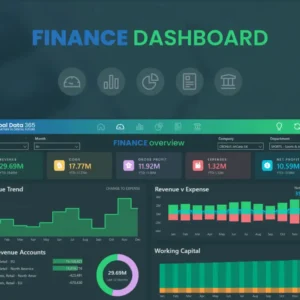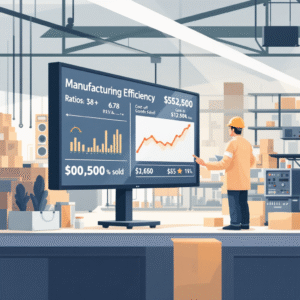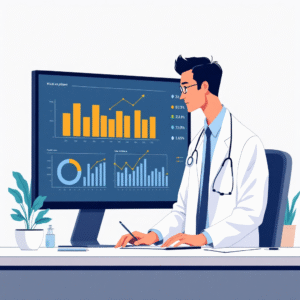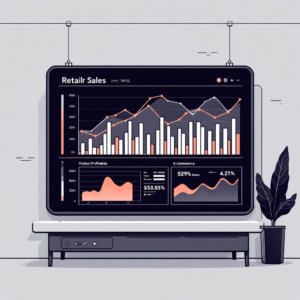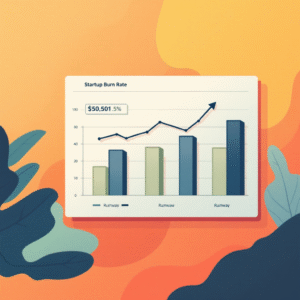Introduction
In today’s data-rich business environment, the ability to extract insights and make data-driven decisions is crucial for success. Microsoft Power BI, a leading data visualization and analytics platform, has revolutionized the way organizations present and interact with data. However, when combined with the power of machine learning, Power BI transforms from a reporting tool into a predictive analytics powerhouse.In this in-depth article, we will explore the integration of Power BI with Azure Machine Learning, Microsoft’s cloud-based machine learning service. We will delve into the ways in which this powerful combination can enhance predictive analytics capabilities, enabling businesses to make forward-thinking decisions and stay ahead of the competition. By the end, you should have a comprehensive understanding of how to leverage this synergy to unlock valuable insights from your data.
Power BI: A Brief Overview
Power BI is a versatile data analytics and visualization platform offered by Microsoft. It empowers users to transform data from various sources into rich visuals and insights, enabling better decision-making. One of Power BI’s key strengths lies in its ability to connect to a wide range of data sources, from Excel spreadsheets to large-scale databases, and its user-friendly interface makes exploring and interacting with data accessible to both technical and non-technical users.With Power BI, organizations can create interactive reports and dashboards, monitor key performance indicators (KPIs), and gain real-time insights. Additionally, its robust sharing and collaboration features facilitate data-driven cultures within businesses, enabling teams to make informed decisions together.
Azure Machine Learning: Unlocking Predictive Power
Azure Machine Learning, a component of the Microsoft Azure cloud computing platform, provides a comprehensive suite of tools for building, training, and deploying machine learning models. It offers a wide range of capabilities, including automated machine learning (AutoML), a rich selection of pre-built machine learning algorithms, and support for popular open-source packages such as TensorFlow and PyTorch.One of the key advantages of Azure Machine Learning is its seamless integration with other Microsoft tools, especially Power BI. This integration enables data analysts and business users to leverage the power of machine learning without needing to become expert data scientists.
Predictive Analytics: The Power of Forecasting
Predictive analytics is the process of using data mining, statistics, and machine learning techniques to make predictions about future outcomes or trends. It involves developing models that analyze current and historical data to uncover hidden patterns and relationships, which can then be used to forecast what might happen next.For businesses, predictive analytics offers immense value. It enables organizations to make more informed decisions, optimize their operations, and gain a competitive edge. By leveraging machine learning algorithms, businesses can forecast customer behavior, identify potential issues before they become problems, and automate complex decision-making processes.
Example: Customer Churn Prediction
Imagine a telecommunications company that wants to reduce customer churn. Using Power BI and Azure Machine Learning, they can build a predictive model that analyzes customer data, such as usage patterns, billing information, and support interactions. The model can identify customers who are likely to switch to a competitor and provide insights into the factors contributing to churn.With this predictive insight, the company can proactively develop retention strategies, such as targeted marketing campaigns or personalized offers, to mitigate churn and improve customer satisfaction.
Integrating Power BI and Azure Machine Learning
The true power of this combination lies in their seamless integration. Here’s a step-by-step guide to how Power BI and Azure Machine Learning work together to enable predictive analytics:
- Data Preparation: Power BI facilitates the collection and preparation of data from various sources, ensuring it is clean, structured, and ready for analysis. This includes data from databases, web services, files, and even streaming data sources.
- Model Training: Azure Machine Learning comes into play during the model training phase. Data scientists or analysts can leverage the platform’s extensive tools and algorithms to build and train machine learning models using the prepared data. Azure Machine Learning also supports automated machine learning, which simplifies the model-building process, making it more accessible to Power BI users who may not have an extensive data science background.
- Model Deployment: Once the model is trained, it can be deployed directly within Azure Machine Learning. This deployment makes the model accessible to Power BI, enabling analysts to leverage its predictive capabilities without the need for complex coding or infrastructure management.
- Data Visualization and Insights: Power BI shines in this final phase, where the predictions generated by the machine learning model are integrated into interactive reports and dashboards. Users can explore the model’s outputs, gain insights, and share them with stakeholders. Power BI’s visualization capabilities make it easy to communicate complex predictions in a digestible manner, ensuring that insights can drive decision-making.
Enhancing Power BI with Machine Learning
The integration of Power BI and Azure Machine Learning adds a layer of sophistication to your data analysis. Here are some ways in which machine learning enhances Power BI:
- Advanced Analytics: Machine learning algorithms can uncover complex patterns and relationships in data that might otherwise be missed. This enables Power BI users to go beyond descriptive analytics and leverage predictive insights to make more forward-thinking decisions.
- Automated Decision-Making: By integrating machine learning models, Power BI can facilitate automated decision-making. For example, a model could predict the likelihood of a particular outcome, such as customer churn, and trigger specific actions or alerts based on predefined rules.
- Real-time Predictions: With Azure Machine Learning, models can be deployed to make predictions in real-time. This capability is especially valuable for time-sensitive decisions, such as fraud detection or personalized marketing offers.
- Personalization: Machine learning enables Power BI to deliver personalized insights to users. For instance, a model could analyze user behavior and preferences to provide tailored recommendations or customized reports.
Security and Compliance
When dealing with sensitive data and machine learning models, security and compliance are paramount. Microsoft offers robust security features for both Power BI and Azure Machine Learning, ensuring your data and insights are protected:
- Data Security: Power BI provides data encryption at rest and in transit, along with role-based access controls to ensure only authorized users can access sensitive information.
- Model Security: Azure Machine Learning offers model registration and management capabilities, ensuring only authorized users can deploy and use models. Additionally, Azure’s network isolation features allow for the secure deployment of models within virtual networks.
- Compliance: Both Power BI and Azure Machine Learning are compliant with a wide range of international and industry-specific standards, including GDPR, HIPAA, and ISO certifications.
Real-World Use Cases
The combination of Power BI and Azure Machine Learning has already proven its worth in a variety of industries. Let’s explore some real-world use cases:
- Healthcare: A hospital can use Power BI and Azure Machine Learning to predict patient readmission rates. By analyzing historical data, the system can identify factors that contribute to readmissions and provide insights to improve patient care and reduce costs.
- Retail: A retail chain can leverage Power BI and machine learning to optimize inventory management. By predicting sales and demand, the system can help retailers make informed decisions about stock levels, product placement, and supply chain management.
- Manufacturing: In the manufacturing industry, predictive maintenance is a valuable application. By analyzing sensor data from machinery, Power BI and Azure Machine Learning can predict equipment failures before they occur, reducing downtime and improving operational efficiency.
- Finance: Fraud detection is a critical application in the finance industry. Power BI, integrated with machine learning models, can analyze transaction data and identify suspicious patterns or anomalies, helping banks and financial institutions prevent fraud and protect their customers.
Conclusion
The integration of Power BI and Azure Machine Learning opens up a world of predictive insights for businesses. By leveraging machine learning algorithms, organizations can go beyond retrospective analysis and make forward-thinking decisions with confidence.As we’ve explored, this powerful combination enables data analysts and business users to build and deploy machine learning models without needing to become data science experts. With seamless integration, advanced analytics, and real-world applications, Power BI and Azure Machine Learning are transforming the way businesses utilize their data.The future of data storytelling is predictive, and organizations that embrace this powerful combination will be well-positioned to stay ahead of the curve.
A Final Thought
With the ever-evolving landscape of data analytics and machine learning, the possibilities for Power BI and Azure Machine Learning are endless. How do you see this powerful combination shaping the future of data-driven decision-making? What potential applications or benefits do you envision for your organization or industry?


